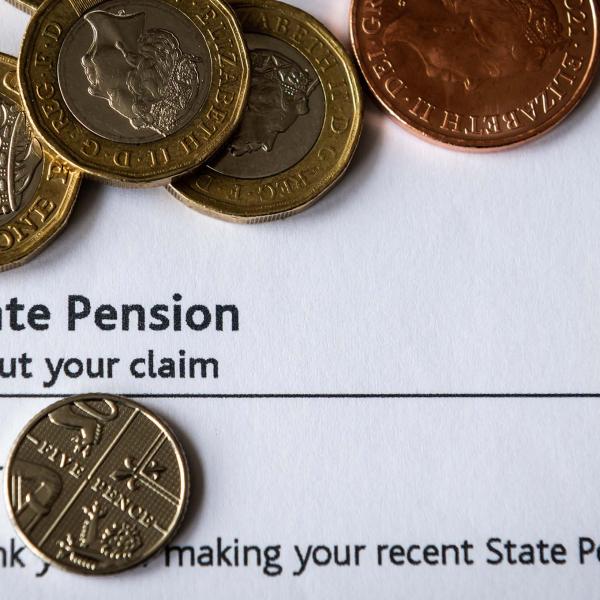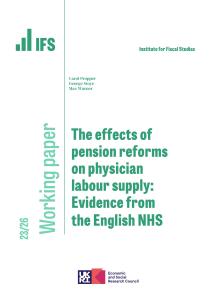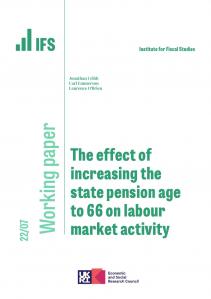On Monday the Government published its long advertised Green Paper on pension reform. Much press speculation has suggested that this would lead to a flat rate pension of £140 a week for all new pensioners from 2015. But to introduce such a scheme on anything like this timetable would involve either significantly more public spending or not honouring pension rights that have already been accrued, both of which have been ruled out by the Government. This means that introducing such a pension by 2015 would not be possible. Indeed the date 2015 does not, in fact, appear in the Green Paper.
The Green Paper did contain two options for reforming the current system of state pensions in the UK:
- Option 1: an acceleration of already legislated changes to the state second pension such that it would become a flat-rate benefit more quickly;
- Option 2: essentially scrapping the state second pension and increasing the level of the basic state pension above the Pension Credit guarantee level.
The Government has stated that its intention is that "any reform will not increase public spending dedicated to state pensions in any year", while Pensions Minister Steve Webb told the House of Commons "we would also continue to honour the contributions that people have built up to the date of reform".
The UK state pension system is extremely complicated and efforts to make it easier to understand are welcome. However achieving this is no mean feat. The complexity of the current system is the result of frequent past reforms. These have had merits, but have usually left (for understandable reasons) accrued rights untouched, and have therefore come at the cost of additional complexity in all but the very long run.
Existing legislation already implies a long-run transition to a flat rate state pension, albeit one made up of two components: the flat-rate basic state pension, and a flat-rate state second pension. This flat rate pension would significantly reduce entitlement to Pension Credit, although it would not eliminate it and many pensioners would still be subjected to means-testing for other benefits such as Housing Benefit and Council Tax Benefit. The current system will therefore eventually be simpler, making it easier for individuals to understand what pensions they can expect from the state in future and make their savings decisions accordingly. The reduction in means testing would also increase the reward for saving among those likely to be on low incomes in retirement.
Under current policies however, flat-rate accrual to the state pension will not start until the 2030s, and so the first individuals to retire on a flat rate pension would be reaching the SPA some 52 years later (when 16 year olds in the 2030s reach their SPA of 68 under current legislation). Given the advantages of the eventual flat-rate system, having simplicity sooner clearly has merits.
The first option for reform proposed by the Government basically keeps the current system as it is, but speeds up the transition to flat rate accrual. Going flat rate on accrual from 2015 would mean that the first individuals to retire on a flat rate pension would be 16 year olds in 2015 reaching the SPA around 2067. This move to flat-rate accrual sooner would lead to those on lower earnings and those receiving credits accruing greater state pension entitlement and those on higher earnings accruing less. This reform would bring about welcome simplicity sooner than under current policy, but still not for many decades to come.
A more radical reform for achieving simplicity would be to give a higher flat rate State Pension to all new retirees much sooner than 2067. This is what the Government is considering in its Option 2. This would result in significantly higher state pensions for many, but would also lead to some accruing lower state pension. The biggest gainers would be those who under the current system would not receive the Pension Credit and would also receive a lower State Pension than the proposed new flat-rate amount. This includes those who would not take up their Pension Credit entitlement, and those not eligible on grounds of their partner's income. The losers would be those with relatively high lifetime earnings who would have otherwise gone on to accrue state pension rights above £140 per week. But given that these losses would only come from future accrual it is not possible that they would be sufficient to finance significant winners from as soon as 2015.
In essence therefore, while the government has reaffirmed existing commitments to a simple flat-rate pension in future, it has met the same problem with actual reforms as its many predecessors. As stated in the Green Paper: "Major change such as this could not be introduced without taking into account the contributions people have made under the current system. Recognising these contributions would inevitably mean that some of the complexity of the current system, particularly related to contracting out, would continue during the transition to the single-tier pension."
Fully honouring past accrued rights - combined with the commitment not to increase spending on pensions in any year - by definition means that we will not be seeing a simple flat-rate pension any time soon.










